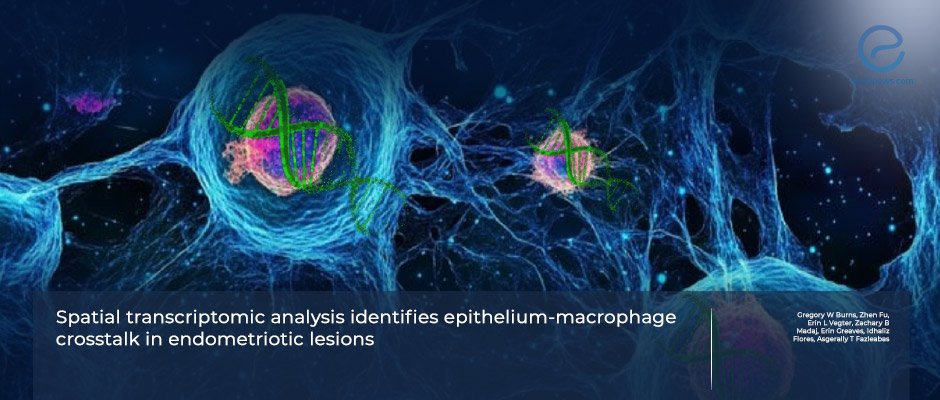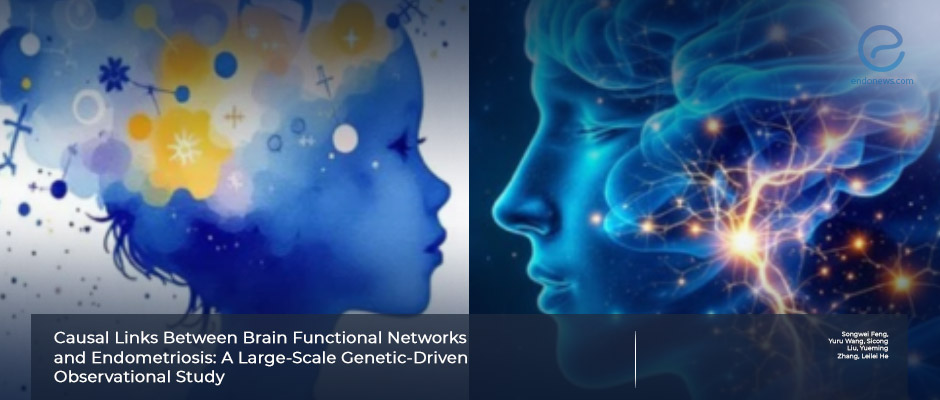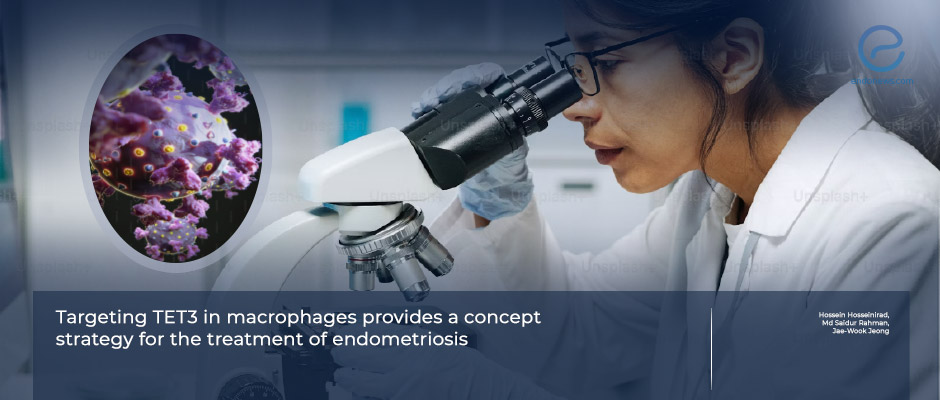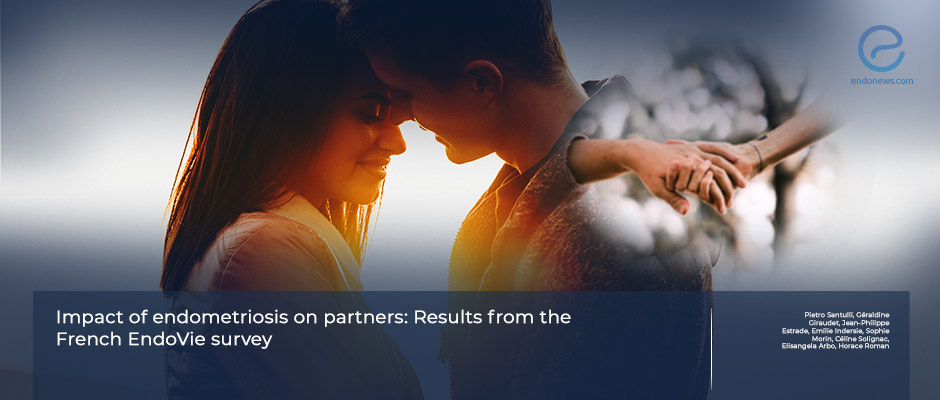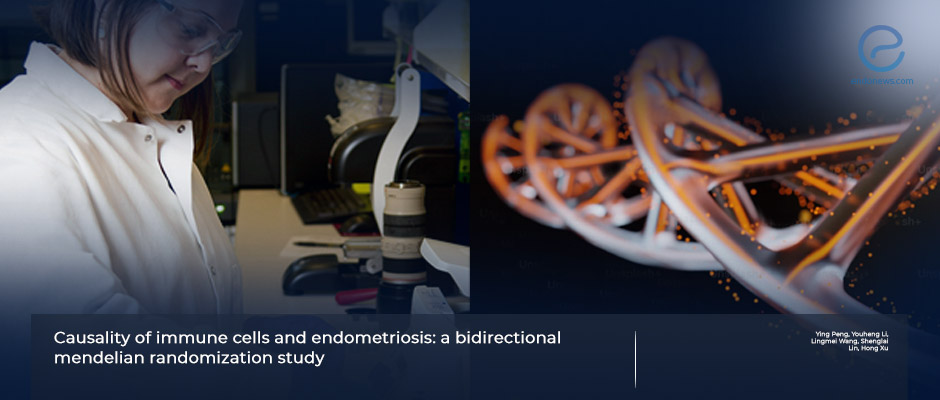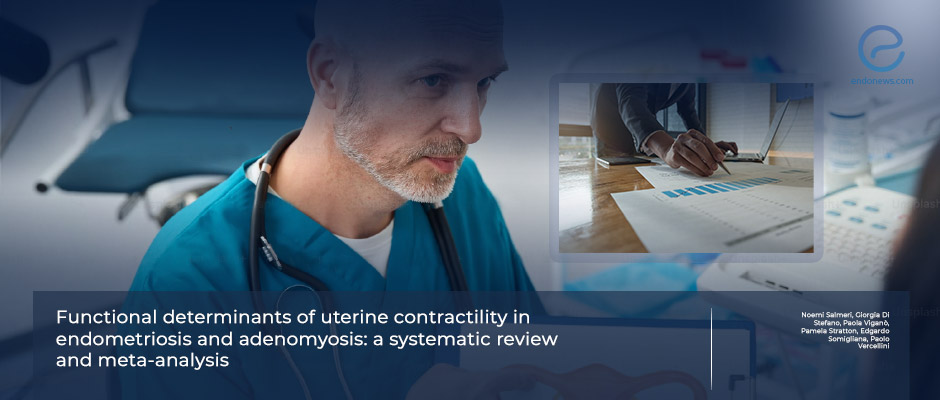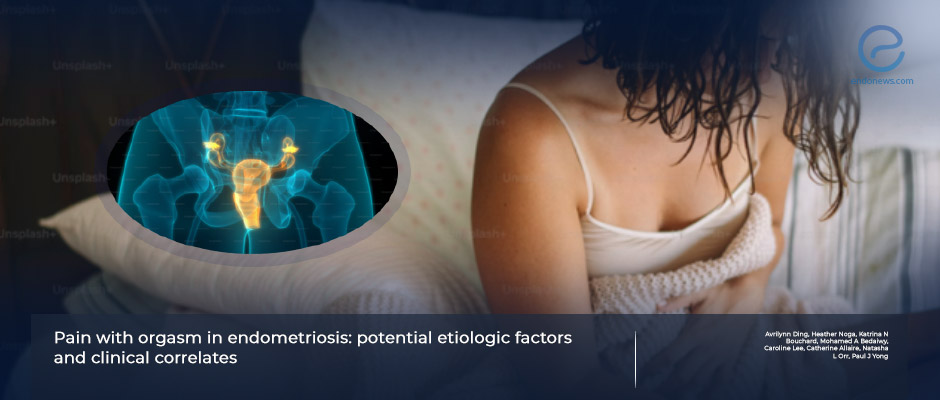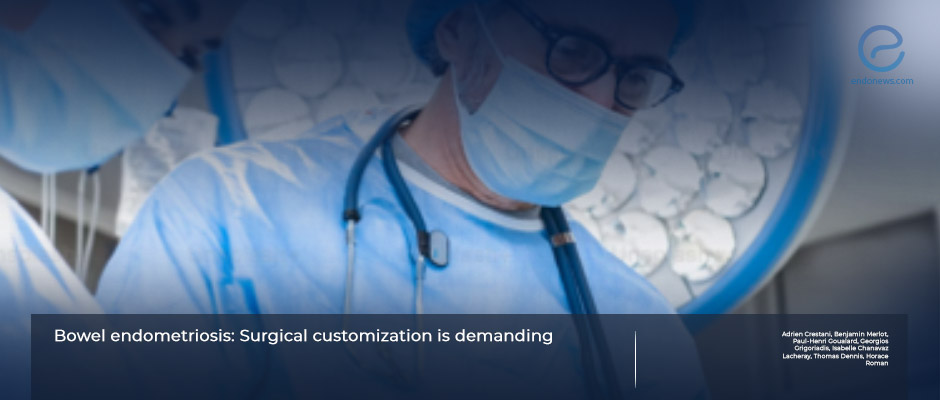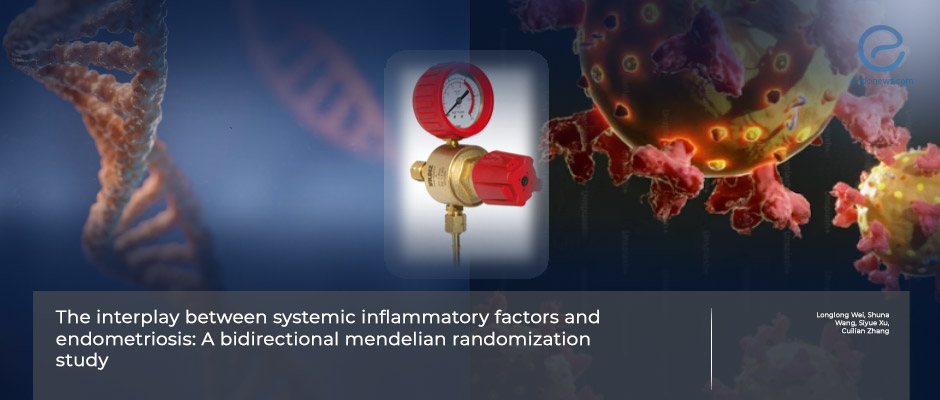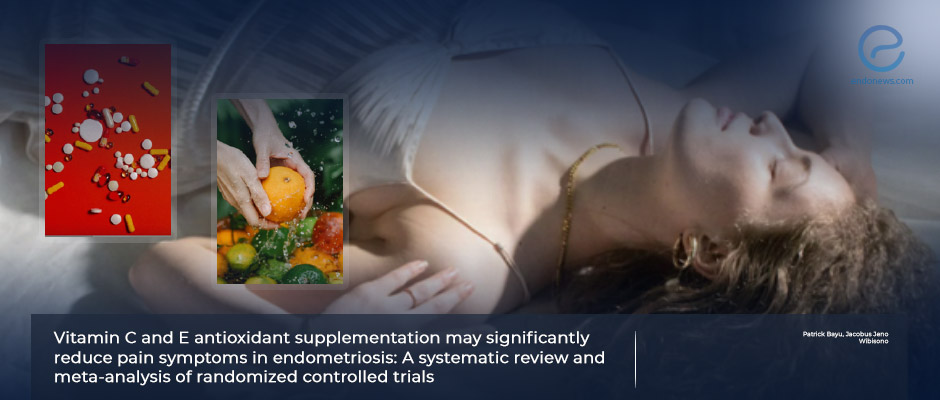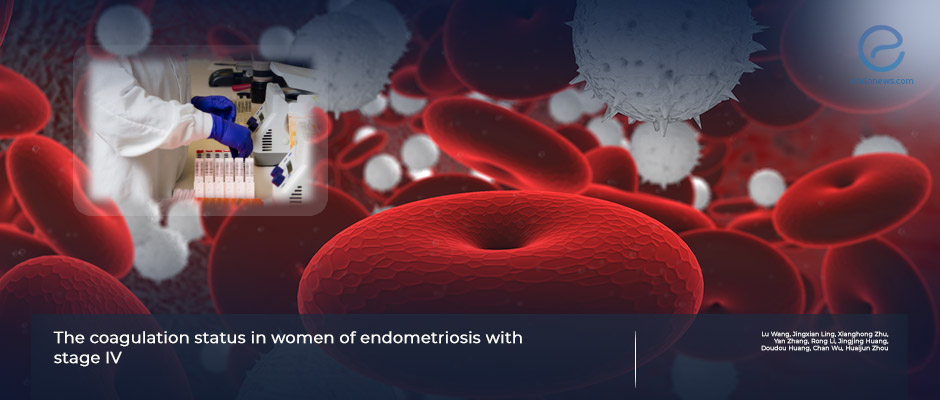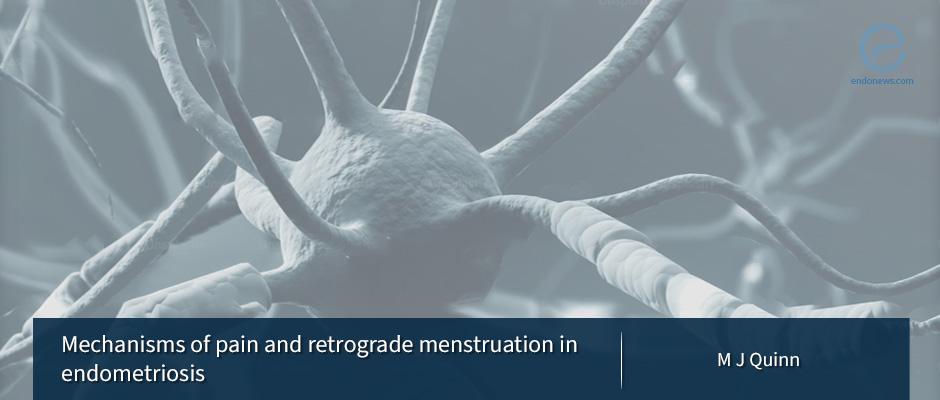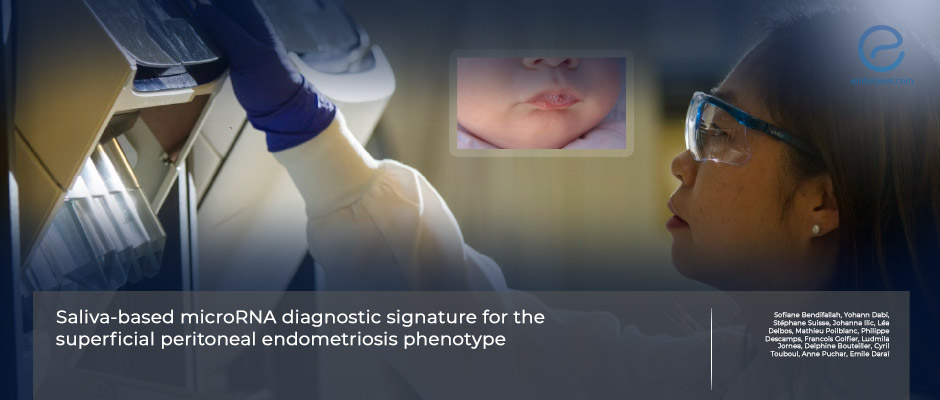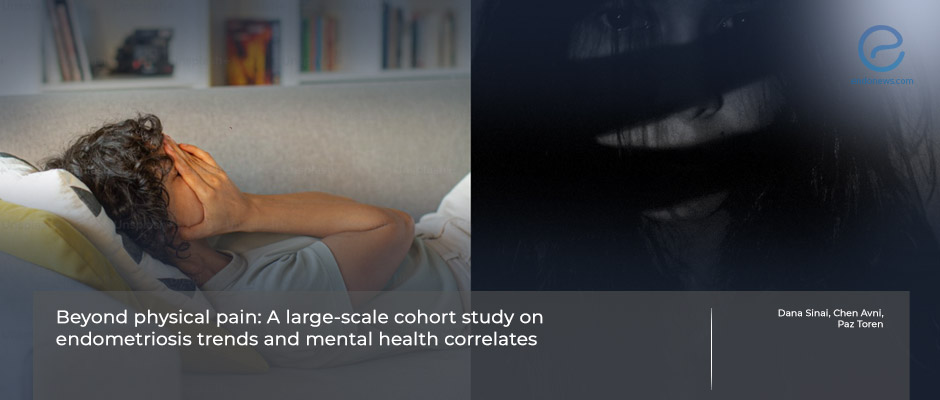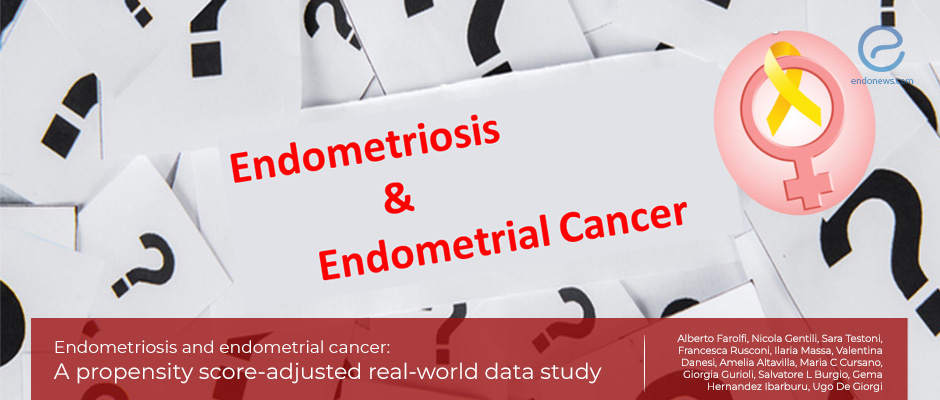 Eylül GÜN, MD
Eylül GÜN, MD
Dr. Gun is a Turkish histopathologist based in the United Kingdom. She is an active member of both national and international professional organizations, including the European Society of Pathology and the Royal College of Pathologists, UK. With a keen interest in advancing her fields of expertise, Dr. Gun is actively engaged in research on gynecological and urological pathology, contributing to the development of diagnostic and therapeutic practices.
Cellular Interactions Driving Peritoneal Endometriosis
A recent study led by Dr.Fazlaebas from the USA, published in the January 2025 issue of iScience, investigated the genes and cellular pathways involved in the development of peritoneal endometriosis. Using spatial transcriptomics, the study identified cell type-specific gene expression changes and examined the interactions between the stroma, epithelium, and macrophages, comparing to the eutopic endometrium from the same patients. The findings revealed significant transcriptional similarities between the lesions and eutopic endometrium, particularly in the sub-epithelial stroma and epithelium, despite the lesions'…
Key Points Lay SummaryGenetic Insights into Brain Networks and Their Impact on Endometriosis Risk
While the exact origins of endometriosis are still not fully understood, emerging evidence points to the central nervous system (CNS) as a significant factor in the development and persistence of the condition. The CNS is responsible for processing pain signals, and in cases of endometriosis, it may heighten these signals, resulting in increased sensitivity to pain. Studies have identified alterations in brain regions associated with pain perception and emotional regulation in individuals with this condition, reinforcing the connection between endometriosis…
Key Points Lay SummaryImmune Cell Infiltration and Genetic Drivers in Endometriosis Development
The development of endometriosis is closely linked to immune cell infiltration, where immune cells and their secreted cytokines play a key role in driving inflammation and the formation of lesions. Studies highlight increased neutrophil infiltration in ectopic tissues, which release IL-8, further exacerbating inflammation. Alongside genetic and epigenetic changes, immune dysregulation contributes to the progression of endometriosis, emphasizing the importance of understanding immune mechanisms in its development. Li et al. from Jinan, China, conducted a study aimed at identifying key…
Key Points Lay SummaryLinking Endometriosis, Anxiety, and Cardiovascular Health
Atherosclerosis, characterized by plaque buildup in arteries, is a major cause of heart attacks and strokes. Chronic inflammation and endothelial dysfunction are key mechanisms in the development of atherosclerosis. While traditional risk factors like high blood pressure, obesity, and smoking are well-known, recent research highlights a potential link between endometriosis and atherosclerosis, especially in younger women. A study by Kigloo et al.from Montreal, Canada, published in Gynecologic and Obstetric Investigation, analyzed data from over 8 million hospitalized women under 35 using…
Key Points Lay SummaryTET3: A new target for endometriosis treatment
Macrophages have a critical role in the development of endometriosis. They are involved in inflammation and tissue repair and are recruited to endometriotic lesions, where they contribute to chronic inflammation. In a recent commentary published in the Journal of Clinical Investigation, Hosseinirad et al. from Missouri, USA highlighted promising research on the role of a protein called ten-eleven translocation 3 (TET3) in endometriosis. They discuss the findings of the study by Lv et al. that shed light on how targeting TET3…
Key Points Lay SummaryExploring the Impact of Endometriosis on Partners
Endometriosis has a significant impact on women, especially in terms of their sexual and relational lives. However, there is limited research on how endometriosis affects the partners of women living with this condition. Santulli et al. from France aimed to further develop the understanding of the experiences and perceptions of the partners of women with endometriosis by assessing how the condition impacts their well-being and daily lives. The article was published in the December 2024 issue of the European Journal…
Key Points Lay SummaryUnraveling the Immune System's Role in Endometriosis
Endometriosis is often driven by complex immune system interactions. Dysregulated immune cells, including macrophages, neutrophils, and natural killer cells, play a significant role in promoting inflammation and lesion progression. Researchers from China Led by Dr.Xu conducted a study to investigate the causal relationship between immune cell dynamics and endometriosis to uncover underlying mechanisms and identify potential biomarkers for improved diagnosis and treatment strategies. The article was published in the October 2024 issue of the journal BMC Women’s Health. The authors…
Key Points Lay SummaryThe Role of Uterine Contractility in Endometriosis and Adenomyosis
Uterine peristalsis, crucial for functions like menstruation and embryo transport, is regulated by hormonal fluctuations throughout the menstrual cycle. Altered peristalsis may contribute to reproductive disorders such as endometriosis and adenomyosis. Abnormal uterine contractility patterns, including hyperperistalsis, may help explain the menstrual pain and infertility commonly associated with these conditions. A systematic review and meta-analysis by Dr. Vercellini's group from Italy, published in the July 2024 issue ofFertility and Sterility, aimed to evaluate uterine contractility patterns in women with endometriosis and adenomyosis…
Key Points Lay SummaryExploring the underlying causes of orgasm-related pain in endometriosis
As one of the most common symptoms of endometriosis, pain may involve peripheral or central mechanisms resulting in different pain sensations. Female orgasm pain is an underexplored condition associated with pelvic floor myalgia and uterine factors like adenomyosis, likely due to the rhythmic contractions of the pelvic floor and cervico-uterine muscles during orgasm. Ding et al. from Vancouver, Canada conducted a prospective registry analysis aiming to evaluate how common orgasm-related pelvic pain is in patients with endometriosis and investigate its links…
Key Points Lay SummaryPersonalized Surgical Strategies for Bowel Endometriosis to Enhance Patient Outcomes
Bowel endometriosis often impacts the rectum or sigmoid colon, causing significant symptoms and reducing fertility. Treatments include hormonal therapy and surgery, with techniques varying widely. Crestani et al., in the leadership of Dr. Horace Roman, conducted a study aiming to reflect on how surgeons can customize the management of bowel endometriosis lesions. The article was published in the June 2024 issue of the journal Best Practice & Research Clinical Obstetrics & Gynaecology. First, they look into the pre-operative care for…
Key Points Lay SummaryEvaluating chronic pain through art
Chronic non-cancer pain, affecting up to 31% of the global population, is a complex condition defined by persistent or recurring pain lasting over three months. Despite advancements in understanding chronic pain as a multifaceted interaction of biological, psychological, and social factors, clinical practice often remains narrowly focused on the physiological aspects. In light of these challenges, arts-based research has emerged as a novel approach to capture the complex experiences of individuals living with chronic pain, offering qualitative insights that traditional…
Key Points Lay SummaryCausal links between inflammatory regulators and endometriosis phenotypes
Endometriosis is believed to be polygenic and multifactorial, involving processes such as angiogenesis, immune responses, hormonal changes, and progesterone resistance. Inflammation is suspected to play a crucial role in its development, potentially creating a microenvironment that supports ectopic endometrial tissue growth. However, the exact relationship between systemic inflammation and endometriosis is still uncertain. While aberrant inflammation is linked to the development and progression of endometriotic lesions, small sample sizes, and confounding factors have prevented establishing a causal relationship. Wei et al.…
Key Points Lay SummaryEndometriosis relief: How vitamins C and E can make a difference
Recent studies indicate that oxidative stress significantly contributes to the onset and progression of endometriosis. High levels of reactive oxygen species (ROS) can cause cellular damage and enhance inflammation, leading to the pain associated with the condition. Antioxidants like vitamins C and E are believed to counteract ROS and help relieve this pain. Bayu and Wibisono from Indonesia performed a meta-analysis aiming to evaluate the effectiveness of combined vitamin C and vitamin E supplementation in reducing pain symptoms in endometriosis…
Key Points Lay SummaryThe role of coagulation factors and tumor markers in diagnosing advanced stage endometriosis
As a systemic inflammatory condition, endometriosis features elevated proinflammatory cytokines, causing pain, endothelial dysfunction, carcinogenesis, and a hypercoagulable state. Patients with endometriosis show decreased thrombin time (TT) and activated partial thromboplastin time (APTT), alongside increased tissue factor (TF) and fibrinogen levels. Wang et al from Nanjing, China recently conducted a study that aimed to investigate the relationship between inflammatory markers and coagulation factors in stage IV endometriosis and to assess their potential as diagnostic biomarkers. The article was published in…
Key Points Lay SummaryRegulatory T cells influence on endometriosis development
While the exact cause of endometriosis is still debated, various theories are being investigated. One approach focuses on the immune system. Regulatory T-cells (Tregs) are crucial in suppressing inflammatory immune responses and preventing autoimmune diseases, allergies, infections, and cancer. Knez et al. from Maribor, Slovenia performed a mini-review regarding the roles of Tregs in various places in the female reproductive tract particularly in endometriosis. It was published in the May 2024 issue of the journal Human Reproduction. They first noted…
Key Points Lay SummaryChronic pelvic pain mechanisms in endometriosis
M. J. Quinn from Shanghai, China wrote an editorial piece in the latest issue of the American Journal of Obstetrics & Gynecology commenting on an article by Gete et al. in which they shared the findings from the Australian Longitudinal Study on Women’s Health, published in American Journal of Obstetrics & Gynecology. Dr Gete et al. showed that women with endometriosis had an adjusted odds ratio of 1.67 for constipation and Dr Quinn commented that this rate would be much higher…
Key Points Lay SummarymicroRNA signatures as a non-invasive diagnostic tool for peritoneal endometriosis
Using microRNA (miRNA) signatures obtained from bodily fluids as a non-invasive diagnostic tool for endometriosis has recently emerged as a useful method. Endometriosis remains an underdiagnosed disease, especially with subtypes such as peritoneal endometriosis which presents with non-specific symptoms. Researchers from France led by Bendifallah et al. conducted a study using the prospective ENDOmiARN study cohort to evaluate the accuracy of this diagnostic method in saliva samples to identify endometriosis patients with the SPE subtype. The study results were published…
Key Points Lay SummaryEndometriosis and mental health disorders: How associated are they?
As with any chronic condition, endometriosis does not only present with physiological problems. The association between endometriosis and mental health issues has been widely studied and it is now known that these patients undergo depression, anxiety, and even bipolar disorder along with the physical symptoms causing a diminished quality of life. It is believed that the mental health burden that these patients are under because of all the things that they go through from delay in the diagnoses to misdiagnosis…
Key Points Lay SummaryEndometrial cancer risk in endometriosis: What does the real-world data reveal?
Endometriosis is considered a benign disease, however, studies showed certain somatic mutations in the endometriotic glands indicating a potential link to endometrial cancer. Later, eutopic endometrial tissue was demonstrated to have the same somatic mutations. This resulted in controversial findings as to whether endometriosis actually contributes to increasing the risk of endometrial cancer with meta-analyses and studies revealing different results. Aiming to shed light on the question of whether endometriosis increases the endometrial cancer risk, researchers led by Dr. Farolfi…
Key Points Lay SummaryRevolutionizing endometriosis diagnosis: Advances in radiological imaging
With recent advances in diagnostic radiological imaging, the diagnosis of endometriosis, particularly for deep and ovarian endometriosis, has been revolutionized. Updated guidelines now recommend the initial use of endometriosis transvaginal ultrasound (eTVUS) and magnetic resonance imaging (eMRI) for diagnosis, although surgery and histology are still necessary for confirmation and treatment. Avery et al., together with the Imagendo Study Group from Australia, Canada, and the UK conducted a review of recent literature focusing on the diagnostic value of eTVUS, its combinations…
Key Points Lay Summary